Troy-Bilt Gas Edger Review
- March 6, 2024
- 0 comment
Troy-Bilt offers a gas-powered edger, the TBE304, which is equipped with a 30cc 4-cycle engine. This engine is designed to be cleaner and quieter than traditional 2-cycle engines, and it also requires no oil mixing. The TBE304 also features SpringAssist technology for easier starting, and a Prime & Go starting system for quick and easy startups.
Specifications
- Engine: 30cc 4-cycle
- Power Source: Gas
- Starting System: SpringAssist, Prime & Go
- Cutting Width: 9 inches
- Maximum Cutting Depth: 1.75 inches
- Handle: Fully molded ergonomic with mounted throttle and idle controls, V-style folding
- Weight: 20 pounds
Unboxing and First Impressions: Packaging and Contents
Opening the Troy-Bilt Gas Edger’s box, you immediately notice the minimalistic yet effective packaging. The edger itself is mostly assembled, a welcome sight compared to the usual array of scattered parts. Inside, apart from the edger, there’s a small pack containing essentials like four-cycle engine oil – a nice touch indicating the product is ready to use after some basic assembly.

The inclusion of a quick start guide alongside the instruction booklet speaks volumes about Troy-Bilt’s user-centric approach. This guide, filled with easy-to-follow steps and illustrations, makes assembly straightforward, even for the less mechanically savvy. Also found in the box are zip ties for cable management, showcasing attention to detail for a safer and more convenient use. Overall, the unboxing experience of the Troy-Bilt Gas Edger is impressive, setting high expectations for its performance as a dependable lawn care tool.
Design and Features
Robust Engine
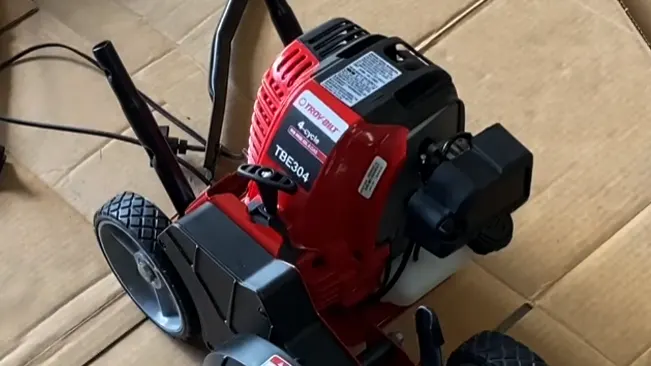
The heart of the Troy-Bilt Gas Edger is its powerful 30cc four-cycle engine, which stands out for its blend of power and efficiency. Unlike traditional two-cycle engines that require a gas and oil mixture, this four-cycle engine operates on gas alone, significantly simplifying maintenance and refueling. This design choice not only makes the edger more environmentally friendly by reducing emissions but also enhances the overall user experience by eliminating the mess and guesswork involved in preparing fuel mixtures.
Prime and Go Starting System

Starting a gas-powered tool can often be intimidating, especially for those unfamiliar with such equipment. The Troy-Bilt Gas Edger addresses this challenge with its Prime and Go Starting System. This innovative feature simplifies the startup process to a straightforward two-step procedure, dramatically reducing the effort and time required to get the edger running. This system is a game-changer for users who value convenience and efficiency, making the edger more accessible to a broader audience, including those who may have previously shied away from using gas-powered tools.
Assembly Process Step-by-Step Guide
Handle Assembly

The handle assembly is a critical step in ensuring the edger is comfortable and easy to use. Start by locating the handle and the hardware provided for its installation, usually consisting of screws or bolts. Carefully position the handle onto the main body of the edger, making sure that the holes on the handle align perfectly with the corresponding holes on the edger’s body. This alignment is crucial for a secure fit. Begin by inserting the screws or bolts through these aligned holes, initially tightening them by hand to ensure proper alignment and to avoid cross-threading. Once all screws or bolts are in place and hand-tightened, use a screwdriver or wrench—depending on the type of hardware—to securely tighten them. This step ensures that the handle is firmly attached to the edger, providing stability and control during operation.
Attaching the Blade

If the edger’s blade isn’t pre-attached, this step will involve locating the blade and the hardware required for its attachment, typically a bolt and a washer. It’s important to align the blade with the mounting area on the edger’s base, paying close attention to the direction the cutting edge faces. This direction is usually indicated in the instruction manual and is vital for effective edging. Once aligned, pass the bolt through the washer and then through the blade, securing it into the designated slot on the edger. Using the appropriate tool, tighten the bolt securely to ensure the blade is firmly attached and won’t loosen during use, which is crucial for both safety and performance.
Checking the Oil and Fuel
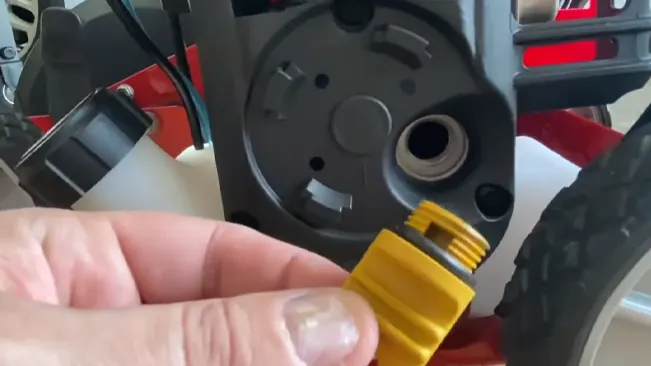
Before using the edger for the first time, it’s imperative to check the oil level to ensure the engine is properly lubricated. Unscrew the oil cap and use the dipstick to gauge the oil level, adding more oil if necessary to reach the recommended level as indicated in the instruction manual. Additionally, fill the fuel tank with the appropriate type of gasoline, adhering to the specifications provided in the instruction manual. This step is crucial for the proper functioning of the edger and to prevent any damage to the engine due to insufficient lubrication or incorrect fuel type.
Operating The Edger Starting the Engine
Starting your Troy-Bilt Gas Edger begins with priming the engine by pressing the primer bulb located near the engine, typically three to five times. This action draws fuel into the carburetor, essential for creating the right fuel mixture for ignition, especially if the edger hasn’t been used recently. Following this, adjust the choke lever to the “Start” or “Choke” position to enrich the fuel mixture for an easier start when the engine is cold. If the engine has been running recently and is still warm, this step might be unnecessary. Before attempting to start the engine, ensure all safety switches or levers are correctly engaged as outlined in the instruction manual, as these are designed to prevent accidental starts.
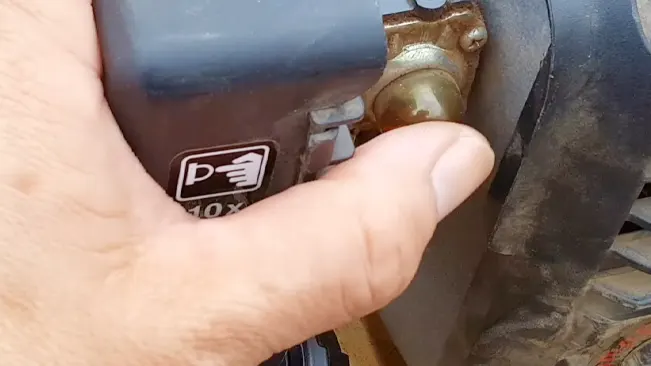
To start the engine, firmly grasp the starter cord’s handle and pull sharply. It may require several attempts, particularly if it’s the edger’s first use of the season or after a long period of inactivity. Once the engine starts and if you’ve used the choke, gradually adjust it back to the “Run” position to stabilize the engine. Allow the engine a few minutes to warm up before commencing your edging tasks. A warm engine will not only perform better but also respond more efficiently, ensuring a smoother edging experience.
Comparison Table
| Feature | Troy-Bilt 304 Gas Edger | CRAFTSMAN E410 Gas Lawn Edger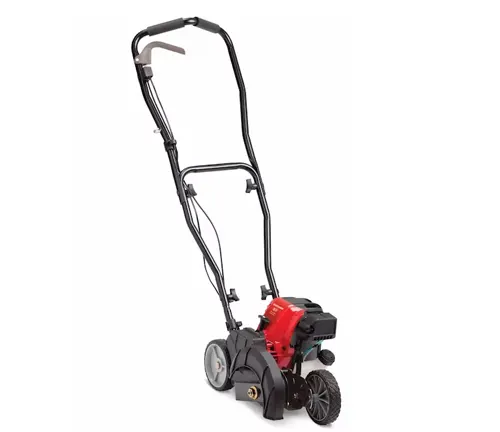 |
|---|---|---|
| Engine Power | 30cc four-cycle engine | 29cc four-cycle engine |
| Blade Size | 9-inch dual-tip blade | 9-inch dual-tip blade |
| Starting System | Prime and Go | Easy Start Technology |
| Adjustability | 5-position height adjustment | 6-position height adjustment |
| Additional Features | Three wheels for enhanced stability | Adjustable trenching capability |
| Fuel System | No need to mix gas and oil | No need to mix gas and oil |
| Design | Ergonomic handle for comfort | Folding handle for compact storage |
Both the Troy-Bilt Gas Edger and the CRAFTSMAN E410 Gas Lawn Edger boast powerful four-cycle engines, with the Troy-Bilt edger slightly edging out in terms of engine capacity. Both models feature a 9-inch dual-tip blade for efficient edging and trenching capabilities, ensuring precision in lawn care.
The Troy-Bilt edger is equipped with a Prime and Go Starting System, making it user-friendly, especially for beginners, while the CRAFTSMAN E410 incorporates Easy Start Technology for reliable, quick starts. In terms of adjustability, the CRAFTSMAN edger offers a slight advantage with six height positions compared to Troy-Bilt’s five, allowing for more precise control over the edging depth.
A notable difference lies in their additional features; the Troy-Bilt edger is designed with three wheels to provide superior stability during operation, whereas the CRAFTSMAN E410 highlights its adjustable trenching capability and a folding handle for easier storage and transport.
Troy-Bilt Gas Edger Pros and Cons
Pros
- Powerful Engine: The 30cc four-cycle engine provides ample power for most edging tasks, offering a good balance between performance and fuel efficiency.
- No Gas and Oil Mixing: The four-cycle engine eliminates the need to mix gas and oil, simplifying maintenance and operation while being more environmentally friendly.
- Prime and Go Starting System: This feature simplifies the starting process, making the edger more accessible to users of all experience levels.
- Versatile Blade: The 9-inch dual-tip blade allows for both edging and trenching, providing versatility in lawn care tasks.
- Height Adjustability: With five-position height adjustment, users can easily customize the edging depth to suit various lawn needs and preferences.
- Stability: The three-wheel design enhances the stability and maneuverability of the edger, making it easier to navigate along sidewalks and garden beds.
- Ergonomic Design: The ergonomic handle design reduces user fatigue, making it more comfortable to operate the edger for extended periods.
Cons
- Weight: The robust engine and durable construction can make the edger heavier and potentially more challenging to maneuver for some users.
- Noise Level: As with most gas-powered lawn equipment, the Troy-Bilt Gas Edger can be relatively noisy, which might be a consideration for users in noise-sensitive areas.
- Cost: The initial investment for a gas-powered edger like the Troy-Bilt might be higher than for electric or battery-powered alternatives.
- Maintenance: While the four-cycle engine reduces some maintenance requirements, gas-powered tools still demand regular maintenance, including oil changes and air filter replacements, which might be a drawback for some users.
- Environmental Impact: Despite being more environmentally friendly than two-cycle engines, the Troy-Bilt Gas Edger still emits more pollutants than electric or battery-powered models.
Maintenance and Care
- Regular Cleaning: After each use, it’s important to clean the edger, especially the blade and the area around the engine. Remove any grass, soil, or debris that may have accumulated. This not only prevents rust and corrosion but also ensures that the edger operates efficiently during its next use.
- Blade Maintenance: Inspect the blade regularly for wear and tear. A dull blade can make your edging work harder and less effective. If the blade is dull or damaged, sharpen or replace it according to the manufacturer’s instructions. Always ensure the edger is turned off and the spark plug is disconnected before performing any maintenance on the blade.
- Engine Care: For the four-cycle engine in the Troy-Bilt Gas Edger, check the oil level before each use and change the oil as recommended in the user manual, typically after 25 hours of use or at least once a season. Use the type and amount of oil specified by the manufacturer to prevent engine damage.
- Fuel Management: Use fresh gasoline and avoid leaving fuel in the edger for extended periods of inactivity, as this can lead to fuel degradation and impact the engine’s performance. If the edger will not be used for more than 30 days, consider using a fuel stabilizer or draining the fuel tank to prevent stale fuel issues.
- Air Filter Maintenance: Check the air filter regularly and clean or replace it as needed to ensure proper air flow to the engine. A clean air filter helps maintain engine efficiency and prolongs its lifespan.
- Spark Plug Care: Inspect the spark plug periodically for signs of wear or buildup and replace it if necessary. A well-maintained spark plug is essential for easy starting and smooth engine operation.
- Storage: When not in use, especially during the off-season, store the edger in a dry, protected space to prevent exposure to moisture and extreme temperatures. Before storing, clean the edger thoroughly and perform any necessary maintenance tasks.
- Regular Inspections: Periodically check all nuts, bolts, and screws to ensure they are tight and secure. Loose parts can lead to inefficiency and potential safety hazards.
Conclusion
In summary, the Troy-Bilt Gas Edger is an effective and user-friendly tool ideal for a variety of landscaping needs. Its 30cc four-cycle engine offers significant power without the inconvenience of mixing fuel, and the intuitive Prime and Go Starting System caters to users across the skill spectrum. The versatile 9-inch blade and adjustable height settings accommodate diverse edging requirements, ensuring a tailored approach to lawn care.
FAQs
1. Does the Troy-Bilt Gas Edger require a mixture of gas and oil?
No, the Troy-Bilt Gas Edger is equipped with a 30cc four-cycle engine that runs on gasoline alone, without the need for mixing oil.
2. How do I start the Troy-Bilt Gas Edger?
The edger features a Prime and Go Starting System, which simplifies the process. Prime the engine by pressing the primer bulb a few times, set the choke if needed, ensure the safety features are engaged, and then pull the starter cord firmly.
3. Can the blade height be adjusted on the Troy-Bilt Gas Edger?
Yes, the edger comes with a five-position height adjustment feature, allowing you to customize the cutting depth based on your lawn’s needs and preferences.
4. How often should I perform maintenance on the Troy-Bilt Gas Edger?
Regular maintenance, such as cleaning after each use, checking the oil level before use, and inspecting the blade for dullness or damage, is recommended. Refer to the user manual for specific maintenance schedules like oil changes and air filter replacements.
5. What should I do with my Troy-Bilt Gas Edger during the off-season?
Clean the edger thoroughly, perform any necessary maintenance, drain or stabilize the fuel, and store it in a dry, protected space to prevent damage from moisture and cold temperatures.
6. Is the Troy-Bilt Gas Edger suitable for professional landscaping use?
While the edger is designed with robust features like a 30cc four-cycle engine and a 9-inch dual-tip blade that can handle rigorous tasks, it is ideal for both casual gardeners and serious landscaping enthusiasts. Its capabilities can meet the demands of professional use for small to medium-scale projects.
7. How do I replace the blade on the Troy-Bilt Gas Edger?
To replace the blade, ensure the edger is off and the spark plug is disconnected. Remove the bolt securing the blade using the appropriate tool, replace the blade with a compatible new one, and securely tighten the bolt. Always refer to the user manual for detailed instructions.
8. Can the Troy-Bilt Gas Edger be used on uneven terrain?
Yes, the edger is designed with stability in mind, featuring three wheels to enhance maneuverability and performance on various terrains, including uneven surfaces.

Joel Cunningham
Forestry AuthorI'm Joel Cunningham, an expert in pruning and weed management with over a decade of experience. My skills are rooted in formal training and extensive practice, focusing on advanced pruning techniques and efficient weed control. I'm known for my quality work, precision, and deep understanding of plant health and soil dynamics. My contributions extend to educational initiatives where I share sustainable practices and advice, establishing myself as a reliable and authoritative figure in the gardening community.

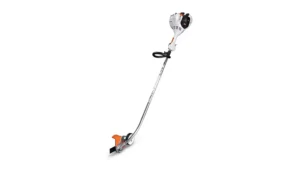
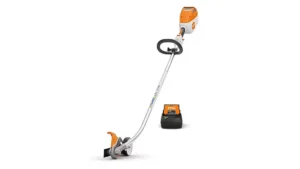
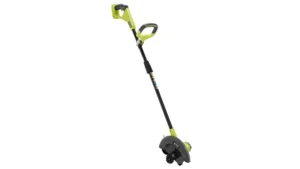
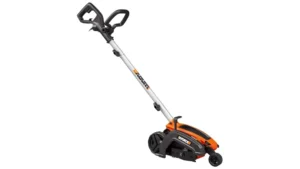
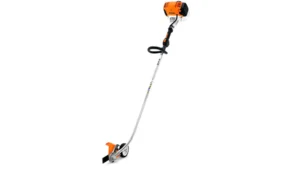
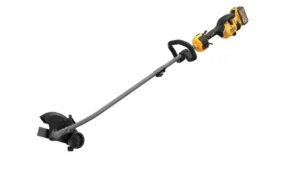
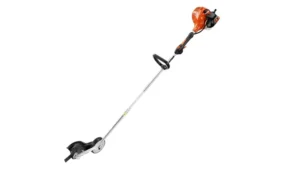
Leave your comment